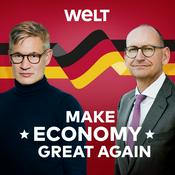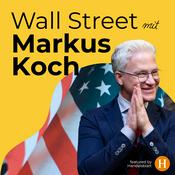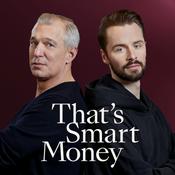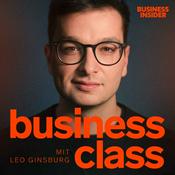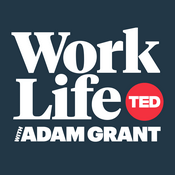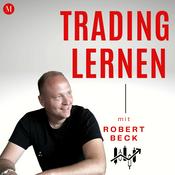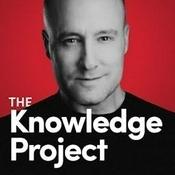Verfügbare Folgen
5 von 1522
- Is the Credit Cycle Overheating?Our Head of Corporate Credit Research Andrew Sheets explains why 2026 might bring a credit cycle that burns hotter before it burns out.Read more insights from Morgan Stanley.----- Transcript -----Andrew Sheets: Welcome to Thoughts in the Market. I'm Andrew Sheets, Head of Corporate Credit Research at Morgan Stanley.Today I'm going to talk about our outlook for global credit markets in 2026 and why we think the credit cycle burns hotter before it burns out.It's Friday, December 12th at 2pm in London.Surely it can't go on like this. That phrase is probably coming up a lot as global credit investors sit down and plan for 2026. Credit spreads are sitting at 25 year plus tights in the U.S. and Asia. Issuance in corporate activity are increasingly aggressive. Corporate CapEx is surging. Signs of pressure are clear in the lowest rated parts of the market. And credit investors are trained to worry. Aren't all of these and more signs that a credit cycle is starting to crack under its own weight?Not quite yet, according to our views here at Morgan Stanley. Instead, we think that 2026 brings a credit cycle that burns hotter before it burns out. The reason is partly due to an unusually stimulative backdrop. Central banks are cutting interest rates. Governments are spending more money, and regulatory policy is easing. All of that, alongside maybe the largest investment cycle in a generation around artificial intelligence, should spur more risk taking from a corporate sector that has the capacity to do so.In turn, we think the playbook for credit is going to look a lot like 2005 or 1997-1998. Both periods saw levels of capital expenditure, merger activity, interest rates, and an unemployment rate that are pretty similar to what Morgan Stanley expects next year. And so, looking ahead to 2026, these two periods offer two competing ways to view the year ahead.2025 might be more similar to a period where the low-end consumer really is starting to struggle, but that another force – back then it was China, now it might be AI spending – keeps the broader market humming. 1997 or 1998, on the other hand, would be more similar to a narrative that investors are growing more confident that a new technology is really transformative. Back then, it was the internet and now it's AI.Corporate bond issuance we think will be central to how this resolves itself. This is a strong regional theme and a key driver of our views across U.S., European and Asia Credit. We forecast net issuance to rise significantly in U.S. investment grade up over 60 percent versus 2025 to a total of around $1 trillion.That rise is powered by a continued increase in technology spending to fund AI as well as a broader increase in capital expenditure and merger activity. All of those bonds being sold to the market should mean that U.S. spreads need to move wider to adjust. And that's true, even if underlying demand for credit remains pretty healthy, thanks to high yields, and the economy ultimately holds up.We think this story is a bit better in other areas and regions that have less relative issuance, including European and Asian investment grade and global high yield. They all outperform U.S. investment grade on our forecast. In total returns, we think that all of these markets produce a return of around 4 to 6 percent, and if that's true, it would underperform, say U.S. equities, but outperform cash.More granularly similar to 2025 or 2005, we think that single name and sector dispersion remain major themes. And where you position in maturity should also matter. Credit curves are steep and our U.S. interest rate strategist are expecting the U.S. Treasury curve to steepen significantly Further. That should mean that so-called carry and roll down and where you position on the maturity curve are a pretty big driver of your ultimate result. In our view, corporate bonds between five- and 10-year maturity in both the U.S. and Europe will offer the best risk reward.The most significant risk for global credit remains recession, which we think would argue for wider spreads on both economic rounds, but also through weaker demand as yields would fall. It would mean that our spread forecasts are too optimistic and that our expectation that high yield outperforms investment grade would be wrong. And then there's a milder version of this bear case – that aggression and corporate supply are even stronger than we think, and that creates conditions closer to late 1998 or 1999.Back then, U.S. investment grade spreads were roughly 30 basis points wider than current levels, even though the economy was strong and even though the equity market kept going up.Thank you as always for your time. If you find Thoughts of the Market useful, let us know by leaving a review wherever you listen. And also, please tell a friend or colleague about us today.--------5:00
- Fed’s Next Steps and Markets’ ReactionsOur Global Head of Macro Strategy Matthew Hornbach and Chief U.S. Economist Michael Gapen discuss the Fed’s path as inflation remains above its target and the labor market continues cooling.Read more insights from Morgan Stanley.----- Transcript -----Matthew Hornbach: Welcome to Thoughts on the Market. I'm Matthew Hornbach, Global Head of Macro Strategy. Michael Gapen: And I'm Michael Gapen, Morgan Stanley's Chief U.S. Economist. Matthew Hornbach: Yesterday, the FOMC meeting delivered another quarter percentage point rate cut. Today we're here to discuss what happens next.It's Thursday, December 11th at 8:30 AM in New York. So, Mike, once again, the Fed cut rates by 25 basis points. That outcome was not a surprise, and the markets reacted positively. But there were some surprises. A bit of a divided FOMC, if you will. How did things play out during the meeting and what are some important takeaways to keep in mind? Michael Gapen: Yeah, well certainly Matt, it is a divided committee. I think that's clear. I think one key takeaway for me is the idea that the Fed is done with risk management rate cuts, and now we're back to data dependent. So, what does that mean? I mean, a risk management rate cut isn't necessarily about the data you have in hand and the data you see; it's your view about the distribution of risks around that. So, in some ways, you're not data dependent when you're making those cuts. Now, I think the challenge at this press conference for Powell was to say, ‘Well, now things are different.’ And it was a nuance in the sense that cuts from here, if and when they come, will be data dependent. But I think at the same time he did not want to communicate that the bar for those rate cuts were exceptionally high. But I think he threaded the needle quite well in transitioning from risk management cuts, which aren't data dependent to an outlook, which is now more data dependent. And I thought he did that artfully well. So, for me, that's the big key. Secondarily I'd add a takeaway for me was he seems fairly confident that inflation will be coming down, and I think he still believes the labor market is cooling. The blend of that came across as a bit dovish to me. And then the third thing I would add is he fairly explicitly ruled out the risk of rate hikes. So, I think the combination of those three things: data dependence, still concerns about cooling in the labor market, and chopping off the upper half of the rate path distribution – those were kind of the key takeaways from my point. Matthew Hornbach: So, Mike, with respect to the labor market, Chair Powell did address it in a couple of different ways. But one of the ways that stood out to my ears was how he described some technical factors that people are well aware of – that could mean the economy is actually shedding jobs to the tune of about 20,000 per month. I was wondering if you could just briefly address what those factors – that are supposedly so well known – might be. Michael Gapen: Sure. So, obviously the data that gets released, there are the initial releases and then there are revisions. And in the labor market, there are what are called annual benchmark revisions. So, the BLS released a preliminary estimate of that benchmark revision several months ago, and if you apply that initial estimate, it would suggest that job growth in 2025 could be about 60,000 jobs per month, less than has already been reported. But at the same time, we know immigration controls are slowing growth in the labor force. So, this is what Powell is calling the really curious balance. How can you have employment growth basically zero, maybe even negative, after these revisions come in – and the unemployment rate relatively stable. Yes, it's gone up a few tenths, but not like you would normally expect that rise would be if we were shedding jobs. So that to me is why he… You know; the technical factors about revisions and things that lead them to be, I think, very unsure about where the labor market is; and lean in the direction of thinking lower rates are better to manage those risks than where they were six months ago. Matthew Hornbach: One of the points that you raised in your opening explanation of the meeting was about inflation. And Chair Powell mentioned an expectation that the inflation related to tariffs would be peaking in the first quarter of the year. That sounded very familiar to me because I believe that's your expectation as well. I'm curious. How are you looking at tariffs and the inflation related to tariffs today? And do you agree with Chair Powell still? Michael Gapen: We do. Our modeling of the tariff pass through and our conversations with clients and firms and what we hear on corporate earnings calls suggests that this is a long process. Meaning tariffs go in place, prices don't go up the next month. Firms make pricing decisions that take time to implement. So, we agree that the tariff pass through story will extend into 2026 and likely through the end of the first quarter. And if that's true, then goods prices should continue to move higher. The year-on-year rate of inflation should move higher, peaking at 3 percent or a little above in the first quarter of the year. And then tat effect should we think be over, which would open the door for overall inflation to start coming back down. So, I will use the dreaded T-word. We think ultimately inflation from tariffs will be transitory. And I agree with the Chair's timeline; inflation should peak in the first quarter of the year and then start to trend down. That said, we think inflation will be above the Fed's 2 percent target into 2027, and this is the cost of providing insurance to the labor market. Matthew Hornbach: So finally, all things considered, what is your outlook for Fed policy in 2026? Michael Gapen: Yeah, and the key here, Matt, is that exactly what you just implied about tariffs and inflation still going on into 2026, right? Because what we know is while firms are gauging exactly where they should be pricing, they've been offsetting tariffs through lower demand for labor. So, we think the Fed will be cutting again in January. We have three months of employment data that come across two employment reports between now and the January meeting. We think they will show continued cooling in the labor market. And then we have a second cut next year in in April. So, while tariffs are getting passed through, we think the labor market will continue to cool. And this Fed will be biased to cutting rates to provide support to the labor market in the process. That would mean the federal funds rate gets to 3 – 3.25 percent in the second quarter of 2026, where we think it'll stay.So Matt, I'd like to ask you a question. What I noticed was the rate market backed up going into the meeting, despite the fact that market participants were projecting a cut. And then the rate market rallied, in my view, significantly during the meeting and right after. What do you think was happening there? Matthew Hornbach: So, there's a phenomenon that happens in all markets where investors often speculate on a potential outcome. And if the outcome is then delivered, the follow-on price action is underwhelming. That is colloquially known as buying the rumor and selling the fact. So, I think going into this meeting kind of in line with your expectations, investors were forming very similar expectations about how the FOMC statement itself would change and the implications that that might have for the future of Fed policy. When that hawkish cut was delivered almost exactly as you had expected, Mike, I think, investors started thinking about the future in a slightly different way. Now that their expectations were met with the meeting outcome, they started to consider, the data that is forthcoming. And whenever, officials at the Fed talk about data in the way that Chair Powell spoke about the data – and by which I mean labeled the labor market as potentially losing jobs at the moment, and labeling inflation as transitory, that we'd be past the peak of tariff related inflation after the first quarter of the year. Investors can kind of look at those factors and extrapolate going forward, what that may mean for Fed policy in the first half of 2026. So, I think similar to your expectations for policy after this meeting, investors probably became a bit more confident in your outlook for Fed policy that we would see additional rate cuts in the first half of next year. And then, of course, after the April meeting, the baton will be passed to the next Fed chair, and I think investors are considering what policy might look like under that new regime at the Fed. And on the margin, the view is that the next Fed chair would be more likely than not to continue the process of lowering policy rates. So, I think all of those factors played into the post press conference, and even during the press conference reaction. Michael Gapen: Okay Matt, one last question, if I may. How did the events of the FOMC this week and the market reaction, how does that dovetail with how you're thinking about longer term rates, in particular where you see 10-year yields going? And the dollar? Matthew Hornbach: So, 10-year yields are relatively close to 4 percent at this juncture, and we expect them to drift modestly lower in the first half of 2026, as the Fed continues this process of lowering the policy rate. One point that's very important to make here is that the longer-term Treasury yields today are now sitting well above the Fed's policy rate, and that hasn't been the case for many, many years now. A lot of investors with whom we speak think that longer term yields can head a lot higher from here. But we're skeptical – because the higher that those yields go relative to the Fed's policy rate, the more attractive those bonds become for other investors to buy. So, we don't expect a big increase in longer term interest rates. Unlike some investors, we are expecting interest rates in the long end to remain relatively stable with a downward bias.On the dollar, similarly, we have the dollar continuing its depreciation trend, which it began in January of 2025, earlier this year. We expect that depreciation trend to continue in the first half of 2026 before – similar to the interest rate path – we see a little bit of dollar strength in the second half of the year. And so, you know this being the last FOMC meeting of the year, Mike, I guess we're going to have to take a wait and see approach until the FOMC reconvenes in the new year. Thanks a lot for taking the time to talk about the Fed with me this year. Michael Gapen: Great speaking with you Matt. See you in 2026. Matthew Hornbach: And thanks for listening. If you enjoy Thoughts on the Market, please leave us a review wherever you listen and share the podcast with a friend or colleague today.--------12:10
- Asia’s Economy and Markets in 2026Our Chief Asia Economist Chetan Ahya and Chief China Equity Strategist Laura Wang unpack Asia’s broadening economic recovery and focus on China’s path to market stability in 2026.Read more insights from Morgan Stanley.----- Transcript -----Laura Wang: Welcome to Thoughts on the Market. I'm Laura Wang, Morgan Stanley's Chief China Equity Strategist.Chetan Ahya: And I'm Chetan Ahya, Chief Asia Economist.Laura Wang: Today – our 2026 macro outlook for Asia with a particular focus on China's equity market.It's Wednesday, December 10th at 10am in Hong Kong.Chetan, as 2025 draws to a close; and if we try to remember what we were thinking about this time last year, I think, probably a lot of the market participants were expecting headwinds going into 2025 on the exports and trade front. But turns out that Asia's export growth is tracking at 8 percent this year so far. What's your explanation for this surprise?Chetan Ahya: Well, yes, Laura, you know, we were all concerned that there will potentially be tariffs, especially on China. And therefore, we were concerned that [the] regions’ exports may be affected negatively. However, what has happened is that tech exports have driven the strength in the overall exports for the region. And that is all because of the story on AI and tech development that we have all been watching.But the good news is that non-tech exports will recover in 2026. In fact, that's the key call we are making – that from early next year, you will see that improvement in the U.S. domestic demand that helps Asia's exports. And at the same time, we are expecting that bulk of this tariff-related uncertainty would be behind us. And so those are the two factors we think will support this recovery in non-tech exports in 2026.Laura Wang: That's great. How significant is the shift in exports from tech to non-tech?Chetan Ahya: Well, we think that's very important for [the] regions’ economic outlook. Because when you think about the tech exports recovery, it was helpful to keep [the] regions’ overall exports growth strong, but it did not have the broader multiplier effect on the economy. So, for example, when you think about the tech exports, it tends to be more capital intensive, and we don't see much benefit on job growth.I think the best example I can give you is when you look at the Taiwan economic numbers. We've seen very strong GDP growth year-to-date. But at the same time, consumption numbers have been very weak. And so, non-tech exports recovery is very important for the broader economic recovery, and that is precisely what we expect in 2026. You will see that broadening out of growth with follow up in CapEx, job growth, and consumption recovery.Laura Wang: Your work suggests that Asia inflation will pick up modestly in 2026. What factors are behind this trend?Chetan Ahya: Well, as the non-tech exports recovery materializes, you should see improvement in capacity utilization across the board in the region. That should reduce the disinflationary pressures that we've been seeing year-to-date. And at the same time, we are expecting that the disinflationary pressures that the region was facing from China is also going to ease in 2026.Laura Wang: How will Asia central banks respond to keep inflation within their comfort zones? And what does this mean for monetary policy across the region in 2026?Chetan Ahya: Well actually, there's not much concern about keeping the inflation within the central bank's comfort zone because what we've seen year-to-date in Asia is that Inflation has been much lower than the central bank's target for a number of economies in the region. And they have been responding to this with more interest rate cuts.But going forward, as disinflationary pressure is reduced, we are expecting that the central banks in the region would end their rate cutting cycle. We should see just about one to two more rate cuts for some of the central banks. And then policy rates should remain largely stable through to the end of 2026.So, Laura, let me come to you now. So, 2025 was a very strong year for China markets. And you see 2026 as a ‘keep it steady’ year rather than a breakout year. What does stability look like for investors and companies?Laura Wang: That’s right, 2025 was a very good year for China equity market. We saw both MSCI China and Han Sang Index delivering more than 30 percent return in absolute terms. Going into 2026, we see it as a year for investors and for the market to preserve and protect what has been achieved in 2025 so far, but not with significantly much higher upside at this point. This is because the valuation re-reading we've seen so far in 2025 is already more than 30 percent, close to 40 percent.In [20]26, we think the valuation will largely stay at its current level, and further upside for the market will be more driven by solid earnings growth. For 2026, we see MSCI China's earnings growth year-on-year at around 6 percent.Chetan Ahya: So, with that backdrop, Laura, do you expect more inflows into the market next year?Laura Wang: Absolutely. Actually, we have already talked to so many investors on a global basis, and we are seeing much higher level of interest in investing in Chinese equities, particularly in some R&D and innovation heavy sectors.That being said, what we are seeing also is relatively light positioning by global investors in Chinese equities – actually across the board, still a quite sizable underweight, which means there will be much higher room for them to increase their allocation gradually in 2026 back to China.Chetan Ahya: And with the U.S.-China tensions easing a bit, and China doubling down on AI and smart manufacturing, where do you see the real-world opportunities from that?Laura Wang: There will be a lot of opportunities inside Chinese equity market, but we do want to stay with the names that will be delivering very solid earnings growth in the next few years. And we also want to highlight the next five years growth strategy laid out by Chinese policy makers.We want to make sure that we focus on the sectors that are very well aligned with the national growth strategy with a strong focus in R&D and innovation – and that would include AI as well as smart manufacturing, automation, robotics, and biotech. We also have collected very high level of interest from global investors in these sectors.At the same time, as we start to see less deflation pressure in 2026, but still with it potentially persisting into 2027, we want investors to still hold on to some exposure to high quality dividend plays. The steady cash returns from these stocks will help you navigate through some volatilities in the market in next year.Chetan Ahya: So, you expect global investors returning, mainland investors shifting money from savings into stocks, and strong cross-border trading within Hong Kong. What does that mean for market behavior and thematic opportunities?Laura Wang: One very positive development we have observed in 2025 is the strong capital market activities in Hong Kong. Hong Kong at single stock exchange basis actually is the most active IPO market in the world in 2025, and with policy support for Hong Kong to continue as a global financial hub, we expect this trend to continue. So, we are seeing more and more capital market activities happening in Hong Kong and mainland China in the next year. And in terms of thematic opportunities, I already mentioned that opportunities align with the national growth strategy with very heavy innovation and R&D focus. Along these opportunities, we're also heavy recommending investors to focus on thematic opportunities such as anti-evolution, as well as corporate governance reform.That summarizes our New Year outlook for Asia economy as well as China equity market. Chetan, thanks so much for taking the time to talk to me.Chetan Ahya: Great speaking with you, Laura.Laura Wang: And thanks for listening. If you enjoy Thoughts on the Market, please leave us a review wherever you listen and share the podcast with a friend or colleague today.--------8:32
- The Outlook for European Stocks in 2026Our Head of Research Product in Europe Paul Walsh and Chief European Equity Strategist Marina Zavolock break down the key drivers, risks, and sector shifts shaping European equities in 2026. Read more insights from Morgan Stanley.----- Transcript -----Paul Walsh: Welcome to Thoughts on the Market. I'm Paul Walsh, Morgan Stanley's Head of Research Product in Europe.Marina Zavolock: And I'm Marina Zavolock, Chief European Equity Strategist.Paul Walsh: And today – our views on what 2026 holds for the European stock market.It's Tuesday, December 9th at 10am in London.As we look ahead to 2026, there's a lot going on in Europe stock markets. From shifting economic wins to new policies coming out of Brussels and Washington, the investment landscape is evolving quite rapidly. Interest rates, profit forecasts, and global market connections are all in play.And Marina, the first question I wanted to ask you really relates to the year 2025. Why don't you synthesize your, kind of, review of the year that we've just had?Marina Zavolock: Yeah, I'll keep it brief so we can focus ahead. But the year 2025, I would say is a year of two halves. So, we began the year with a lot of, kind of, under performance at the end of 2024 after U.S. elections, for Europe and a decline in the euro. The start of 2025 saw really strong performance for Europe, which surprised a lot of investors. And we had kind of catalyst after catalyst, for that upside, which was Germany’s ‘whatever it takes’ fiscal moment happened early this year, in the first quarter.We had a lot of headlines and kind of anticipation on Russia-Ukraine and discussions, negotiations around peace, which led to various themes emerging within the European equities market as well, which drove upside. And then alongside that, heading into Liberation Day, in the months, kind of, preceding that as investors were worried about tariffs, there was a lot of interest in diversifying out of U.S. equities. And Europe was one of the key beneficiaries of that diversification theme.That was a first half kind of dynamic. And then in the second half, Europe has kept broadly performing, but not as strongly as the U.S. We made the call, in March that European optimism had peaked. And the second half was more, kind of, focused on the execution on Germany's fiscal. And post the big headlines, the pace of execution, which has been a little bit slower than investors were anticipating. And also, Europe just generally has had weak earnings growth. So, we started the year at 8 percent consensus earnings growth for 2025. At this point, we're at -1, for this year.Paul Walsh: So, as you've said there, Marina, it's been a year of two halves. And so that's 2025 in review. But we're here to really talk about the outlook for 2026, and there are kind of three buckets that we're going to dive into. And the first of those is really around this notion of slipstream, and the extent to which Europe can get caught up in the slipstream that the U.S., is going to create – given Mike Wilson's view on the outlook for U.S. equity markets. What's the thesis there?Marina Zavolock: Yeah, and thank you for the title suggestion, by the way, Paul of ‘Slipstream.’ so basically our view is that, well, our U.S. equity strategist is very bullish, as I think most know. At this stage he has 15 percent upside to his S&P target to the end of next year; and very, very strong earnings growth in the U.S. And the thesis is that you're getting a broadening in the strength of the U.S. economic recovery.For Europe, what that means is that it's very, very hard for European equities to go down – if the U.S. market is up 15 percent. But our upside is more driven by multiple expansion than it is by earnings growth. Because what we continue to see in Europe and what we anticipate for next year is that consensus is too high for next year. Consensus is anticipating almost 13 percent earnings growth. We're anticipating just below 4 percent earnings growth. So, we do expect downgrades.But at the same time, if the U.S. recovery is broadening, the hopes will be that that will mean that broadening comes to Europe and Europe trades at such a big discount, about 26 percent relative to the U.S. at the moment – sector neutral – that investors will play that anticipation of broadening eventually to Europe through the multiple.Paul Walsh: So, the first point you are making is that the direction of travel in the U.S. really matters for European stock markets. The second bucket I wanted to talk about, and we're in a thematically driven market. So, what are the themes that are going to be really resonating for Europe as we move into 2026?Marina Zavolock: Yeah, so let me pick up on the earnings point that I just made. So, we have 3.6 percent earnings growth for next year. That's our forecast. And consensus – bottom-up consensus – is 12.7 percent. It's a very high bar. Europe typically comes in and sees high numbers at the beginning of the year and then downgrades through the course of the year. And thematically, why do we see these downgrades? And I think it's something that investors probably don't focus on enough. It's structurally rising China competition and also Europe's old economy exposure, especially in regards to the China exposure where demand isn't really picking up.Every year, for the last few years, we've seen this kind of China exposure and China competition piece drive between 60 and 90 percent of European earnings downgrades. And looking at especially the areas of consensus that are too high, which tend to be highly China exposed, that have had negative growth this year, in prior years. And we don't see kind of the trigger for that to mean revert. That is where we expect thematically the most disappointment. So, sectors like chemicals, like autos, those are some of the sectors towards the bottom of our model. Luxury as well. It's a bit more debated these days, but that's still an underweight for us in our model.Then German fiscal, this is a multi-year story. German fiscal, I mentioned that there's a lot of excitement on it in the first half of the year. The focus for next year will be the pace of execution, and we think there's two parts of this story. There's an infrastructure fund, a 500-billion-euro infrastructure fund in Germany where we're seeing, according to our economists, a very likely reallocation to more kind of social-related spend, which is not as great for our companies in the German index or earnings. And execution there hasn't been very fast.And then there's the Defense side of the story where we're a lot more optimistic, where we're seeing execution start to pick up now, where the need is immense. And we're seeing also upgrades from corporates on the back of that kind of execution pickup and the need. And we're very bullish on Defense. We're overweight the issue for taking that defense optimism and projecting out for all of Europe is that defense makes up less than 2 percent of the European index. And we do think that broadens to other sectors, but that will take years to start to impact other sectors.And then, couple other things. We have pockets of AI exposure in the enabler category. So, we're seeing a lot of strength in those pockets. A lot of catch up in some of those pockets right now. Utilities is a great example, which I can talk about. So, we think that will continue.But one thing I'm really watching, and I think a lot of strategists, across regions are watching is AI adoption. And this is the real bull case for me in Europe. If AI adoption, ROI starts to become material enough that it's hard to ignore, which could start, in my opinion, from the second half of next year. Then Europe could be seen as much more of a play on AI adoption because the majority of our index is exposed to adoption. We have a lot of low hanging fruit, in terms of productivity challenges, demographics, you know, the level of returns. And if you track our early adopters, which is something we do, they are showing ROI. So, we think that will broaden up to more of the European index.Paul Walsh: Now, Marina, you mentioned, a number of sectors there, as it relates to the thematic focus. So, it brings us onto our third and final bucket in terms of what your model is suggesting in terms of your sector preferences…Marina Zavolock: Yeah. So, we have, data driven model, just to take a step back for a moment. And our model incorporates; it's quantum-mental. It incorporates themes. It incorporates our view on the cycle, which is in our view, we're late cycle now, which can be very bullish for returns. And it includes quant factors; things like price target, revisions breadth, earnings revisions breadth, management sentiment.We use a Large Language Model to measure for the first time since inception. We have reviewed the performance of our model over the last just under two years. And our top versus bottom stocks in our model have delivered 47 percent in returns, the top versus bottom performance. So now on the basis of the latest refresh of our model, banks are screening by far at the top.And if you look – whether it's at our sector model or you look at our top 50 preferred stocks in Europe, the list is full of Banks. And I didn't mention this in the thematic portion, but one of the themes in Europe outside of Germany is fiscal constraints. And actually, Banks are positively exposed to that because they're exposed to the steepness – positively to the steepness – of the yield curve.And I think investors – specialists are definitely optimistic on the sector, but I think you're getting more and more generalists noticing that Banks is the sector that consistently delivers the highest positive earnings upgrades of any sector in Europe. And is still not expensive at all. It's one of the cheapest sectors in Europe, trading at about nine times PE – also giving high single digit buyback and dividend yield. So that sector we think continues to have momentum.We also like Defense. We recently upgraded Utilities. We think utilities in Europe is at this interesting moment where in the last six months or so, it broke out of a five-year downtrend relative to the European index. It's also, if you look at European Utilities relative to U.S. Utilities – I mentioned those wide valuation discounts. Utilities have broken out of their downtrend in terms of valuation versus their U.S. peers. But still trade at very wide discounts. And this is a sector where it has the highest CapEx of any sector in Europe – highest CapEx growth on the energy transition. The market has been hesitant to kind of benefit the sector for that because of questions around returns, around renewables earlier on. And now that there's just this endless demand for power on the back of powering AI, investors are more willing to benefit the sector for those returns.So, the sector's been a great performer already year to date, but we think there's multiple years to go.Paul Walsh: Marina, a very comprehensive overview on the outlook for European equities for 2026. Thank you very much for taking the time to talk.Marina Zavolock: Thank you, Paul.Paul Walsh: And thanks for listening. If you enjoy Thoughts on the Market, please leave us a review wherever you listen and share the podcast with a friend or colleague today.--------11:00
- Stocks in 2026: What’s Next for Retail InvestorsMike Wilson, our CIO and Chief U.S. Equity Strategist, and Dan Skelly, Senior Investment Strategist at Morgan Stanley Wealth Management, discuss the outlook for the U.S. stock market in 2026 and the most significant themes for retail investors. Read more insights from Morgan Stanley.----- Transcript -----Mike Wilson: Welcome to Thoughts on the Market. I'm Mike Wilson. Morgan Stanley’s CIO and Chief U.S. Equity Strategist. Daniel Skelly: And I'm Dan Skelly, Senior Investment Strategist for Morgan Stanley Wealth Management. Mike Wilson: Today we're going to have a conversation about our views on the U.S. stock market in 2026, and what matters most to retail investors in particular. It's Monday, December 8th at 9am in New York. So, let's get after it. Dan, it's great to see you. We always talk about the markets together. I think this is a great opportunity for us to share those thoughts with listeners. Our view coming into this year is still pretty bullish for 2026. We've been bullish on [20]25 as you have, probably for, you know, similar – maybe some slightly different reasons. I think one of our differentiating views is that we do think inflation is still a major risk for individual investors. And institutional investors, quite frankly, which is why stocks have done so much better. A concept, I think you're well aware of. And I think, you know, the risk for retail is that there's going to be; it's going to be volatile. So, point-to-point, we're still bullish as you are. How are you thinking about managing that point-to-point path? And how are you structuring your portfolio as we go into 2026 with a bullish outlook – but understanding that it's not always going to be smooth. Daniel Skelly: So, like you said, we've also shared this view that next year's going to be positive, albeit there's going to be more volatility. And when I think about the two main risks that retail investors are facing today, one of them is definitely inflation. We're seeing that in services. We're seeing that in housing. We've had the labor market shrink over the recent couple of quarters, so who knows if wage inflation pops up again. But there are ways to definitely hedge against that in an equity portfolio. We think, for instance, owning parts of the AI infrastructure cohort is one of the ways of hedging, whether that be in utilities, pipelines, energy infrastructure in general. These are areas that we think are a necessary hedge against inflation risk. And number two are a positive diversifier. And second key point, Mike, just thinking about that diversification comment. Look, we all know that in many ways the Mag 7 – and the technology strength that we've seen this past year – has driven a fairly concentrated market. I think what people, particularly on the individual side, are recognizing less is just how much AI cuts across many other sectors in parts of the market. And again, we think that risk of over concentration is still out there. And we like the idea of thinking of embedding natural diversification into the equity portfolio. Mike Wilson: Yeah. I mean, it's interesting. Inflation, you know, is part of that story too because AI is somewhat disinflationary or deflationary. I think, you know, investing in things that can drive higher productivity even away from AI can mitigate some of that risk in the economic outlook. But if I think about, you know, the Mag 7 dominance, and just this concentrated market risk, which you spoke about. If inflation re-accelerates next year, which, you know, is one of our core views as the economy improves – doesn't that broaden out the opportunity set? And you know, like there's been this idea that, ‘Oh, you have to own these seven stocks and nothing else.’ I mean, part of our view for next year is that we think the market's going to broaden out. How are you set up for that broadening out? And how are you thinking about picking stocks and new themes that can work – that maybe people aren't paying attention to right now? Daniel Skelly: Yeah, it's a great point, Mike. And so, on the first topic, we do think there's broadening, and that's a combination of factors. Number one is just the market becoming more convicted about the Fed cutting path, which we've talked about, and the firm's view reaffirms for next year. Number two is starting to see some of the benefits of deregulation, right, which should impact maybe some of the more cyclical sectors out there – Financials, Energy being two of them. Maybe seeing more M&A activity too as a byproduct of deregulation. And that should bode better for mid- and maybe small caps as well as they receive a M&A premia in the valuations. And I know you've talked about small caps recently in your commentary. But last point I'll make Mike, and it comes back to AI. It almost feels like AI is this huge inflationary ramp at first to get to that deflationary nirvana down the road – with productivity. I think one of the key factors we think about, in terms of a bottom-up perspective, which is what we focus on in across the portfolio, is definitely pricing power. Who owns the pricing power and the key data and the key AI adoption outlook in order to absorb all the different tools and technology diffusion we've seen in the last three years. And that's going to play out, Mike, as you well know, across a variety of sectors and themes. So, agreed, we should see broadening for all those varying reasons. Mike Wilson: So, I mean, there are a couple areas I think, where we overlap. Financials…Daniel Skelly: Yep. Mike Wilson: Industrials, Healthcare, some of the themes that I think we both; we share our bullish views. And what do you think those areas are, within those sectors? You think that you have a differentiated view maybe than the consensus being Financials, Industrials, Healthcare? That the market may be missing, which offers more upset? Daniel Skelly: Sure. I'll start with Financials, which has been an overweight call for us for some time, as I know it has for you as well. And I think that kind of cyclical re-acceleration in the economy is one part. I think the Fed cutting is another part. I think deregulation is clearly another driver. Fourth Capital Markets recovery, which we have seen now. We had a little bit of a technical lull with the government shutdown in terms of filings and issuance, but we see all of the pipeline indicators, indicating green lights for next year in terms of recovery. I think the one thing I would argue that I've observed in looking at all of our vast data sets is that despite all these different bullish factors, this still maybe has been a theme or a sector that investors have traded in and out of, right? I don't think I've even seen like a real strong, consistent overweight. So, I think number one, that's an opportunity. And last point is, listen, there's different sub-sector bifurcation going on, as you know, within the industry, whereas money centers and large banks are performing really well. The same is not the case of regionals and alts managers. And there are varying reasons for that. But we would even argue, Mike, there could be catchup trades within the sector next year. Mike Wilson: Yeah, I would agree on that. I mean, the regional over money centers and actually regionals over alt managers, because I mean – I think the Treasury Secretary has talked about this, you know. Trying to get the regulated banking system kind of back in the game may actually be an opportunity to take share back from some of those alt managers, which have actually done quite well. What about on Healthcare? We upgraded that back in the summer. I think you've been constructive on parts of Healthcare, right. Wwhat do you think people are missing there and why could that be a good sector for next year? Daniel Skelly: Yeah. We were definitely, I'll say, earlier than you and wrong. You had really good timing in terms of your Healthcare upgrade last summer. And look, the sector was out of favor for two years. What we think we observed in the kind of July-August period is: First and foremost, I think we got past the point of maximum policy concern and risk. And ironically, we saw some kind of nominal or surface level deal signed with the government around most favored nation pricing. And it was really, not a lot to write home about. It wasn't as egregious as a policy inflection as some had feared. So, I think that was the first key catalyst. Second, we just saw a really good revisions breadth. And I know this is a comment you make a lot in your work. But we saw across big pharma, tools and life science, medical technology, and devices. We saw really good positive earnings revisions coming out of third and even starting the second quarter. Thirdly, I think if you're talking about an M&A in capital markets recovery, you can't not talk about Healthcare. I think that's a space that'll be ripe for deal making. And then just fourth, right? Look, as the market broadens out, and as people are stopping or maybe slowing the crowding and the key leadership, they're going to go again from AI enablers to AI adopters. And we think AI is going to be a vector that cuts across the Healthcare industry in a really positive way. Mike Wilson: Yeah, I mean, the efficiencies that are, you know, possible in the Healthcare sector seem immense. I mean, it, it appears to me that that's going to be an area where there's probably some new solutions, some new companies we don't even know about yet. So, to me that's a very exciting area that's been dormant for quite a while. What about Consumer, Dan? It's been this K economy. It's been very bifurcated, you know, high-end versus middle-income, lower-income. I mean, what are the themes within consumer that you're finding in putting to work in your portfolio? Daniel Skelly: Yeah. We've talked a lot, Mike, in the last year or so about playing Consumer platforms, particularly domestically oriented versus global consumer brands. And there's a couple of key drivers behind that. But first, when you look at what's going on in consumer land, and Simeon Gutman's been a really good, kind of, analyst looking at this theme over time. In many ways it's starting to resemble the Mag 7 in terms of winner take all phenomena. If you look at some of the major consumer big box platforms, they're taking 50- 60 percent of share of total retail sales. Just a couple of companies. So, number one, we're really focused on platforms where market share gains, free cash flow and revenue – recurring revenue – in particular, are leading to even stronger competitive moats, particularly in a capital-intensive industry. And what we've observed about retail is that as those leaders in big box areas take more share, they can reinvest that winning capital in their advertising growth in their online channel and widen their moats even more. Secondly though, in order to have a positive theme, I've always said you got to fund it from somewhere. And so, what we've observed again over the last year or so is – when I think about some of the even highest quality global brands they've suffered seeing less traction in China. And that's amid less of a willingness from Chinese consumers to own American and European brands. There's a lot to that, but I think culturally, obviously the trade war, the AI war for prominence leading to maybe some of that lack of cultural traction. Secondly, we've also, I think, started to see the growth of AI tools start to weigh on established brands. I think what makes a brand cool and the barriers to entry in terms of creating brands is going to go down in the future because of AI influencing and advertising tools. And so, simply put, we continue to like, Mike, the big box consumer platforms across, clothing and food, housing, across e-commerce. That continues to be one of our higher conviction themes. Mike Wilson: All right, Dan, I want to come back to, kind of, AI infrastructure. I mean, AI spending has been the big, big theme. But there's other types of infrastructure spend and CapEx. It's been dormant, quite frankly, and with the [One] Big Beautiful Bill [Act] perhaps incentivizing some of that. How does that play into your thought process around other industrial stocks that could benefit? Daniel Skelly: Absolutely, Mike. You cited the AI infrastructure spending. We think continues kind of unimpeded going into next year. Number two, we think the Fed cutting, just creating better financing conditions in terms of bigger projects. You mentioned as well, the fiscal incentives. And look, I think Chris Snyder has been spot on the last year or so talking about reshoring production wins coming back to the U.S. I don't think this is certainly as cognizant on the – or on the minds of individual investors. Maybe not even institutional investors. But the U.S. is winning manufacturing production share and has been for some time. And we've seen that no doubt ramp up post the announcement of the [One] Big Beautiful Bill {Act]. No doubt. But we think that has implications, Mike, for stocks and stock picking within what we would call, kind of, shorter cycle themes. And I think whether that be in Logistics and Transports or HVAC or some of the Non-Resi, Non-Datacenter related verticals. There are a whole bunch of stocks that have been kind of dormant for two to three years as we've been in this ISM recession that we think could certainly wake up next year as things broaden out. Mike Wilson: Yeah, we would agree with that. And I guess lastly, you know, there's always this Johnny come lately, you know, fear factor of, ‘Well … stocks are up a ton. My neighbor's bragging how much money they're making. So, I must have missed it all.’ And I think embedded within that is this fear of valuation. The valuations are now very rich. What's your response to individual clients about – it's not too late, they haven't missed it. It's still a bull market. In fact, we would argue a new bull market began in April with a new economic cycle. What is your response to those folks who have that angst? Daniel Skelly: Two things. One is the market today looks totally different than it did in the past, and AI is no doubt one big part of that. The composition of the market in many ways is higher quality, less debt, more recurring revenue. Big call option on productivity coming from AI earnings, power, et cetera. So, we think the market should trade at richer levels than it did in the past, point number one. Point number two, we would say whereas most people say time is your friend – for individual investors, they would also say valuation is no short term or short run indicator, but it's the best long run indicator. And looking at today's, again, extended levels of valuation relative to history – they would say that's not going to play out well over the long run. I would actually take the other side of that. I think that the earnings and the economic potential unleashed not just from AI, but some of these fiscal and monetary policies could create tremendous margin earnings potential in the long run. And so, I think today we're looking at a level of multiples that appears artificially high. And based on what could be a big earnings inflection point in that multi-year timeframe could frankly just be superficially high. Mike Wilson: Well, Dan, it's always great to get your perspective. I always enjoyed chatting with you. Daniel Skelly: Likewise. Mike Wilson: Thanks for coming on the show and sharing it with our listeners. It's great to see you. Daniel Skelly: Thanks Mike. Mike Wilson: And thanks to our listeners. Thanks for tuning in and let us know what you think by leaving us a review. And if you find Thoughts on the Market worthwhile, tell a friend or colleague to try it out.--------13:53
Weitere Wirtschaft Podcasts
Trending Wirtschaft Podcasts
Über Thoughts on the Market
Short, thoughtful and regular takes on recent events in the markets from a variety of perspectives and voices within Morgan Stanley.
Podcast-WebsiteHöre Thoughts on the Market, The Diary Of A CEO with Steven Bartlett und viele andere Podcasts aus aller Welt mit der radio.de-App
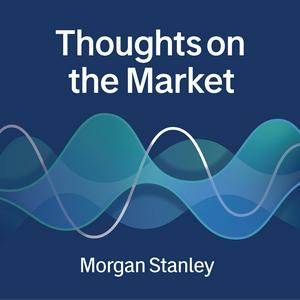
Hol dir die kostenlose radio.de App
- Sender und Podcasts favorisieren
- Streamen via Wifi oder Bluetooth
- Unterstützt Carplay & Android Auto
- viele weitere App Funktionen
Hol dir die kostenlose radio.de App
- Sender und Podcasts favorisieren
- Streamen via Wifi oder Bluetooth
- Unterstützt Carplay & Android Auto
- viele weitere App Funktionen


Thoughts on the Market
Code scannen,
App laden,
loshören.
App laden,
loshören.






